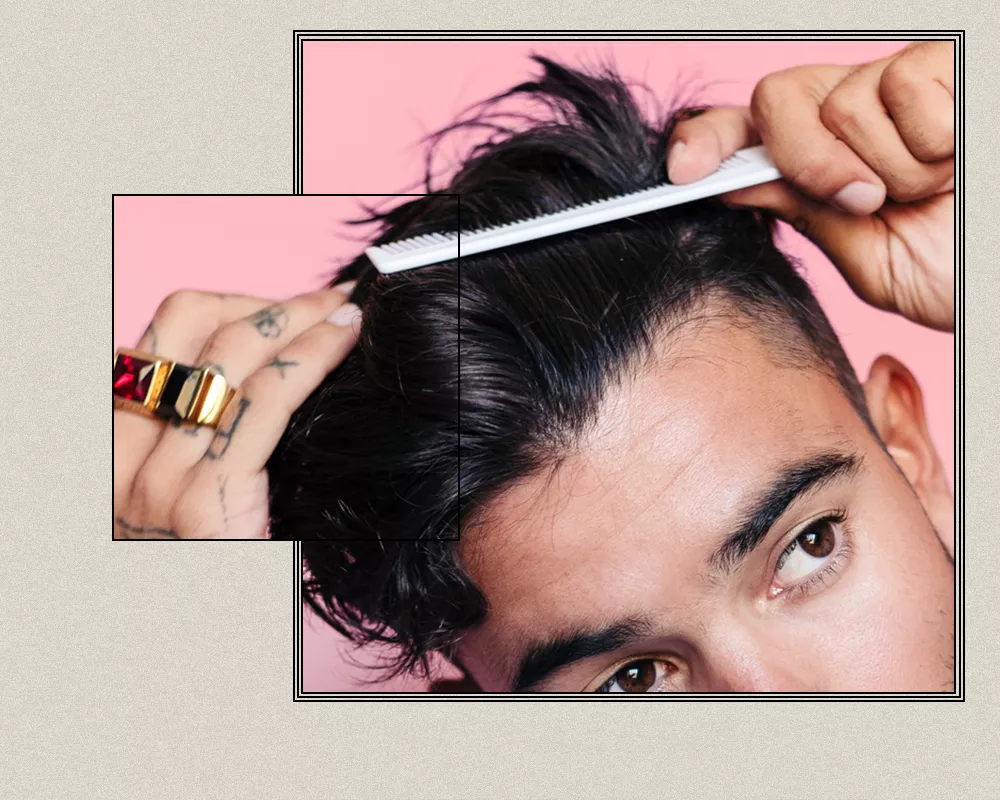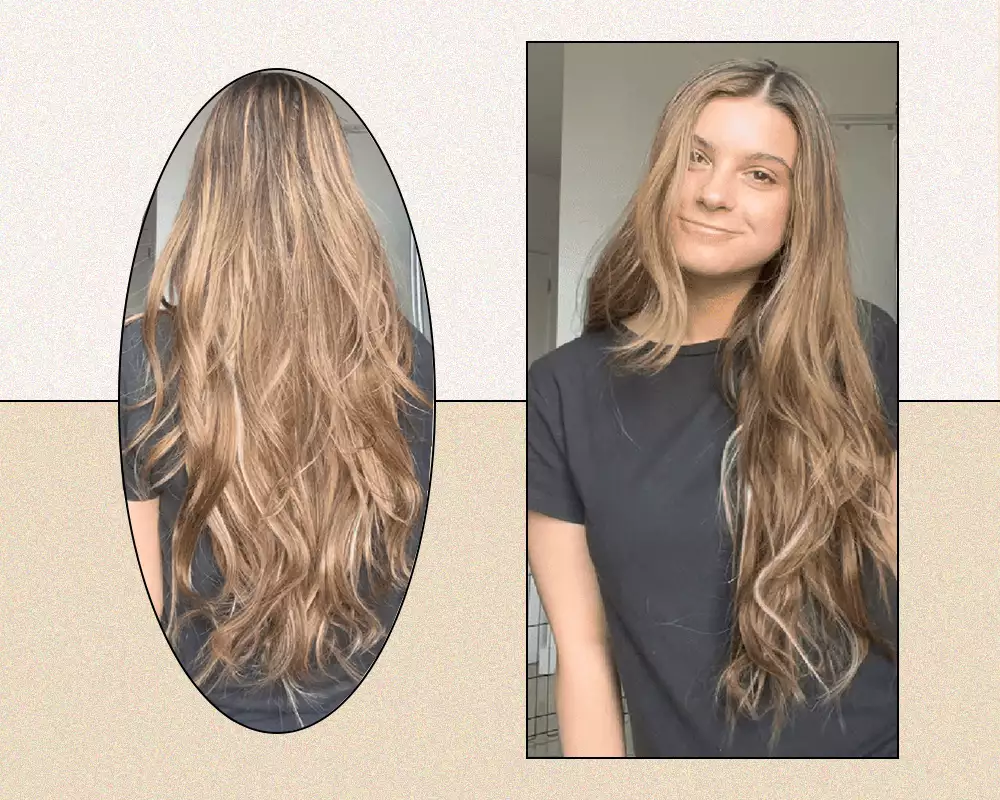
Stocksy
At some point after the age of 30, the vast majority of us start to lose our hair—some more than others—spawning that vital question that’s probably even older than Shakespeare: to do or not to do (something about it). Whether it’s a receding hairline or going cue-ball bald, normal, age-related hair loss—otherwise known as androgenetic alopecia (AGA)—is a part of life, so there’s nothing wrong with letting nature take its course and embracing your new look.
However, if you decide to take hair loss head-on with one of today’s many restoration procedures, you’ll no doubt come across Neograft, a space-age device that performs Follicular Unit Extraction (FUE) and implementation, AKA the modern-day version of hair plugs. The result is hair that looks, well, like it used to, and in the game of hair restoration, that’s what we’re after.
To get the full story on the ins and outs of Neograft, we talked to hair restoration specialists Bessam Farjo, and Rajan Bhojwani, as well as Sarah Hickey from Venus Concept, the maker of the Neograft 2.0 Automated Hair Restoration system.Keep reading to learn more.
What Is Neograft Hair Restoration?
Neograft is an automated device that performs all elements of FUE hair restoration, including extracting the hair follicle (a portion of the process known as “harvesting”), creating the site for the transplanted graft, and re-implanting the graft where it’s needed. “It’s a bit like repotting a plant," Farjo says of FUE. “The plant is the hair and the surrounding soil is the skin that surrounds the hair.” The basic tool used to perform the procedure looks like a tiny drill bit that’s one millimeter or less in diameter, which encircles the individual follicular units and plucks them out, after which they’re inspected for quality and re-implanted.
Another unique feature of the Neograft is suction, which slurps up each follicular unit and stores it in a canister within the machine. Considering the typical FUE procedure requires upwards of 2,000 individual grafts, harvested and implanted over a day-long process, this provides the surgeon with a bit more leeway.
Each Neograft machine is also equipped with a screen that displays a variety of digital readouts, including the number of grafts being extracted, to ensure each stage of the process is done optimally.
Does Neograft Hurt?
According to Farjo, FUE in general should be painless, as it’s performed using a local anesthetic that’s injected directly into the areas in which the grafting procedure will take place. He says most patients say it feels like they’re wearing a hat. However, if you’re particularly anxious, he notes that some practices offer light sedation to help calm your nerves.
Benefits of Neograft
When compared with the alternative strip method (which you’ll read about later), hair restoration via FUE has several unique benefits including:
It’s minimally invasive: Neograft FUE can be done under local anesthesia at a clinic or private medical office, thus eliminating the need for a lengthy hospital stay.It’s effective: Hickey says that the NeoGraft system can reduce the time needed to harvest and/or implant grafts to help ensure more consistent harvesting and insertion, as well as enhance the quality of the harvested grafts and maintain a proper depth of insertion.Fast recovery: She adds that donor sites heal faster than insertion sites (usually within days), with patients typically making a full recovery within a week to 10 days.Reduced likelihood of scarring: Hickey also notes that because follicles are harvested one-by-one, rather than by a strip, there’s no need for stitches or staples afterward and it won’t leave a linear scar at the back of the scalp. This is especially great news for people who like to wear their hair short.
The Best Candidate for Neograft
Hickey says the ideal candidate for Neograft FUE is a male or female patient with androgenic alopecia (pattern hair loss) from types three to five on the Norwood scale.
Additionally, Farjo says that before considering FUE, take stock of where you are on your hair loss journey, as there’s little point in restoring hair on one part of your head if you’re only going to lose more hair from another part as time goes on. He says the best candidate for FUE is someone whose hair loss has begun to stabilize, which usually doesn’t happen until a little later in life. “The ideal patient is someone in their 40s or 50s who has quite an obvious area of baldness and who tells me that they’ve looked the same for four or five years," he says. "Then I know what I give them is going to survive for the rest of their lives.”
On the other hand, “the least ideal patient is the anxious 22-year-old who’s at the beginning of their hair loss journey, who has a family history of baldness and is looking for a total anti-hair loss solution without understanding that they’re going to continue to go bald in the future,” Farjo adds.
There are also those for whom FUE is not suitable for medical reasons, Hickey says. This includes patients suffering from alopecia which is not diagnosed as androgenic (e.g. scarring alopecia, alopecia areata, etc.) as well as people with certain health conditions such as high blood pressure, bleeding disorders, and various skin diseases.
How to Prepare for Neograft
Hickey says that the first step toward Neograft FUE hair restoration is a medical assessment by a reputable practitioner, including various laboratory tests and discussions regarding your general health and medications.
“The things we’re most concerned about during an FUE treatment [are things] that make the operation difficult to perform,” Farjo says, such as excessive bleeding. For this reason, he advises patients to discontinue any supplements that may thin the blood, like high doses of aspirin, as well as any hair growth supplements including minoxidil. (Never stop taking any supplements recommended by your doctor without consulting them first.) Also, stay away from booze: “Alcohol can make you congested and bring more blood to your skin, so we ask patients not to drink any alcohol for several days before the procedure,” he says. Lastly, if youre a smoker, don’t smoke for several days beforehand.
What to Expect During a Neograft Procedure
The first thing to know about FUE in general is that it’s time-consuming, taking anywhere from six to eight hours based on the size of the area being treated, Hickey says. Your surgeon might begin by shaving the areas from which donor follicles will be harvested, but that depends on your individual situation. Once you’re all numbed and marked, you’ll lie down so the surgeon can begin extracting the grafts from the donor area, after which they’ll create tiny incisions on the recipient area to accommodate the implanted follicles. Finally, the grafts will be implanted into the recipient area or areas.
If the thought of sitting still for eight-plus hours makes you nervous, not to worry: Farjo says you’ll have plenty of breaks to help you stay comfortable.
Farjo recommends wearing a button-down shirt rather than a t-shirt on the day of your procedure, as it can be easily taken off without rubbing against your newly-implanted grafts.
Neograft FUE vs. the Strip Method
Farjo says that the biggest difference between FUE and the strip harvesting method is how the follicles are obtained. Although both FUE and the strip method involve the implementation of individual hair follicles, the latter is harvested via a strip of skin typically taken from the back of the head, which could leave a scar that looks like a line. That being said, the strip method may be more advantageous for certain types of patients (including those with long hair), since there’s no need to shave the head.
As FUE tends to be less surgical than the strip method, it’s the preferred choice for many patients nowadays. Still, it’s best to decide based on your doctor’s advice.
Neograft vs. Other FUE Methods
The Neograft device is one of several ways to perform FUE hair restoration that, instead of manual excision, employs the concept of automated microsurgery. “The attraction of automated microsurgery is the fast recovery time, machine precision, and reduced scarring,” says Bhojwani. Hickey broke it down further: “The manual excision method involves the surgeon using a punch to make an incision in the scalp in order to harvest the follicular unit. With motorized systems, the punch is done using a handpiece attached to a motor, which rotates the tip for easier harvesting.”
Potential Side Effects
Farjo says that normal side effects from an FUE procedure include pain, redness, scabbing, crusting, and itchiness (which is also a sign of healing), all of which subside in a week or so. Less common ones include swelling, especially if you’ve had a lot of work done, as well as bruising.
There’s also the risk of infection if done incorrectly or without proper hygienic precautions, so be aware of this when choosing your practitioner.
“Things could also go wrong in a surgical way,” Farjo adds. “For example, if you remove too many grafts per square area, you risk damage to the skin, causing excessive scarring which may look obvious when the hair grows back.” He also says there’s the risk of too many recipient slots, which could lead to damaged skin, scarring, or failure of growth.
The Cost
The cost of FUE comes down to the number of grafts used, Farjo says. Depending on the size of the procedure and the clinic itself, this could range anywhere from $4-5 per graft, putting a typical 2,000 graft procedure at around $8,000 to $10,000.
Aftercare
Hickey says proper post-Neograft FUE aftercare is crucial, as during this period the healing mechanisms of your body are securing the grafts firmly in place. Bhojwani doubles down on this advice: “These can be essentially viewed as organs of the skin (an organ itself), and have intricate life cycles and properties. When transplanting this ‘organ,’ care must be taken not to damage the tissue, both pre- and post-operatively and during the procedure.”
She offers some basic aftercare instructions:Cleanse regularly: Follow your doctor’s cleansing instructions to wash without scrubbing in order to minimize crusting and make the transplant less noticeable and the healing more rapid.Avoid inversion: For the first three days, keep your head elevated above your heart.No exercise for a week:Avoid exercise that would raise your heart rate above 100 beats per minute for at least seven days.No smoking or alcohol: Avoid smoking or alcohol for at least two weeks to facilitate proper healing.Stay out of the sun: Avoid unprotected exposure to the sun for at least three months. This means stocking up on SPF 30+ and wearing a hat if you’re going to be in direct sunlight.
One last (but very important) thing: Farjo points out that it’s normal for the newly implanted hair to fall out after a week or two, but it will regrow within three to four months.
The Final Takeaway
If hair loss is a definite “no” for you, and you’ve got the time and money to put into a solid hair restoration procedure, Neograft FUE may be the solution you’re looking for. It’s minimally invasive, proven to be effective, and aside from a shaved head and some basic aftercare, you can carry on as before pretty much right away. Just be sure to do your homework in finding a reputable








